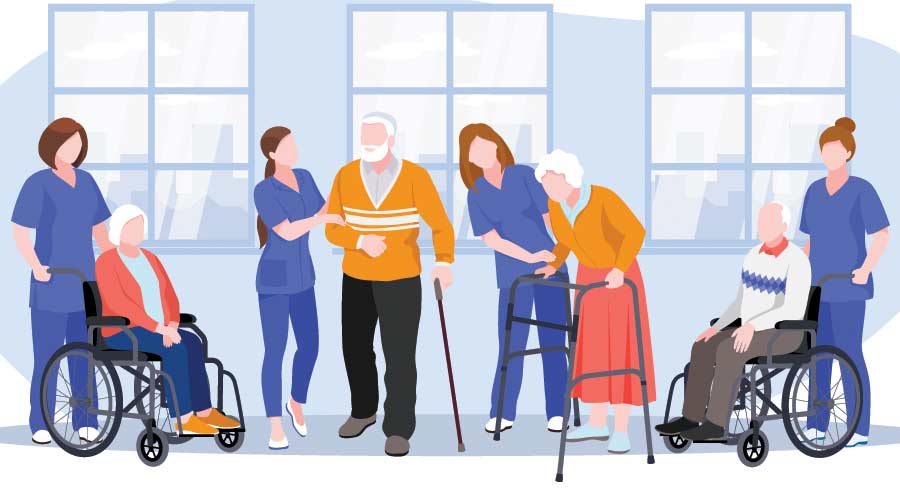
The Association for Professionals in Infection Control and Epidemiology (APIC) applauds the Government Accountability Office for identifying actions to improve infection prevention and control (IPC) practices in nursing homes. The GAO’s report is based on recommendations from a panel of experts, including representatives of APIC.
Of significance to APIC is that the GAO recommends the Department of Health and Human Services (HHS) enhance efforts to develop staffing solutions and strengthen mandatory IPC training for nursing home staff.
APIC has long advocated for the Centers for Medicare & Medicaid Services (CMS) to require that each nursing home facility have at least one full-time, dedicated, infection preventionist on staff and ensure that these individuals are trained in IPC. The CDC’s healthcare-associated infection (HAI) tracking system – the National Healthcare Safety Network — should build on current reporting requirements in nursing homes to include surveillance of HAIs and drug-resistant pathogens, such as Candida auris. C. auris is currently on the rise in long-term care facilities and has been identified by CDC as an urgent antimicrobial resistance threat.
Before the COVID-19 pandemic led to devastating consequences in nursing homes, HAIs killed as many as 380,000 residents each year. Unlike in hospitals, where IPC departments are well-established, nursing homes have woefully inadequate infection prevention requirements and infrastructure. Too often the role of an infection preventionist is filled by someone expected to serve as the infection preventionist while also serving full-time in another capacity with other major responsibilities. As a result, nursing home infection preventionists spend less than a third of their time on IPC-related work. Only 40 percent have specialized training in IPC and less than 10 percent are certified.
Sadly, this lack of investment resulted in tragic deaths from COVID-19. At the peak of the pandemic, more than one-third of all deaths were associated with nursing homes. Likewise, drug-resistant pathogens are allowed to spread unchecked in these facilities. Seventeen states now have reported cases of C. auris with the clinical case count more than tripling between 2019 and 2021.
For related content, check out these best practices for combatting C. auris.

 Celebrating BSCAI's 60th Anniversary eBook
Celebrating BSCAI's 60th Anniversary eBook The Down and Dirty on Cleaning in Virus Season
The Down and Dirty on Cleaning in Virus Season How Surfactant Use is Expanding in Commercial Cleaning
How Surfactant Use is Expanding in Commercial Cleaning